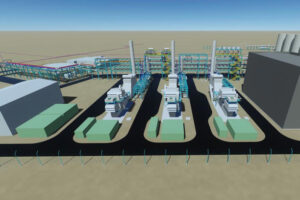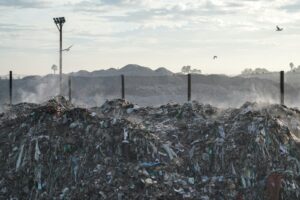Renewable energy capacity overtakes coal
The International Energy Agency (IEA) says that the world’s capacity to generate electricity from renewable sources has now overtaken coal.
The IEA says in a new report that last year, renewables accounted for more than half of the increase in power capacity.
Half a million solar panels were installed every day last year around the world. In China, it says, there were two wind turbines set up every hour.
Renewable energy sources, such as wind, solar and hydro are seen as a key element in international efforts to combat climate change.
At this stage, it is the capacity to generate power that has overtaken coal, rather than the amount of electricity actually produced.
Renewables are intermittent – they depend on the sun shining or the wind blowing, for example, unlike coal which can generate electricity 24 hours a day all year round. So renewable technologies inevitably generate a lot less than their capacity.
The IEA’s executive director Fatih Birol said ‘We are witnessing a transformation of global power markets led by renewables.’
The expansion of renewable capacity reflects cost reductions for onshore wind and solar panels that the report describes as impressive; reductions that would have been ‘unthinkable just five years ago’.
The IEA expects the trend of declining costs to continue.
Those two technologies are likely to account for three quarters of future growth in renewables. Hydropower will continue growing, the report said, but it is likely to do so more slowly than before.
Declining costs are also one reason the agency has increased its forecast for renewable capacity in the future.
Another factor mentioned by the report is government policies that provide financial incentives for using renewable power sources.
The United States, for example, has extended tax credits. The report said policy changes in China, India and Mexico have also been important forces behind the increased forecast for the growth of the sector.
The IEA said the centre of gravity for renewable growth is moving to emerging markets.
China, the report said, ‘remains the undisputable global leader of renewable energy expansion, representing close to 40% of growth’.
Although this report does point to a much bigger role for renewables than seemed likely very recently, it still thinks there’s a need for more.
Mr Birol said: ‘Even these higher expectations remain modest compared with the huge untapped potential of renewables.’
And in other areas of energy use, beyond electricity, renewables have made less impressive inroads.
In transport and heating ‘progress in renewables penetration… remains slow’, said the report.
It also said there is a need for more action on climate change. Renewable energy – for electricity and other uses – is a key group of technologies for reducing emissions of greenhouse gases, notably carbon dioxide.
Renewables are supplying energy that would probably otherwise have come from burning fossil fuels such as coal and oil, which yield greenhouse gases as a waste product.
The IEA said international targets for limiting climate change will ‘require stronger decarbonisation rates [which means the replacement of fossil fuels] and accelerated penetration of renewables in all three sectors: power, transport and heat’.















